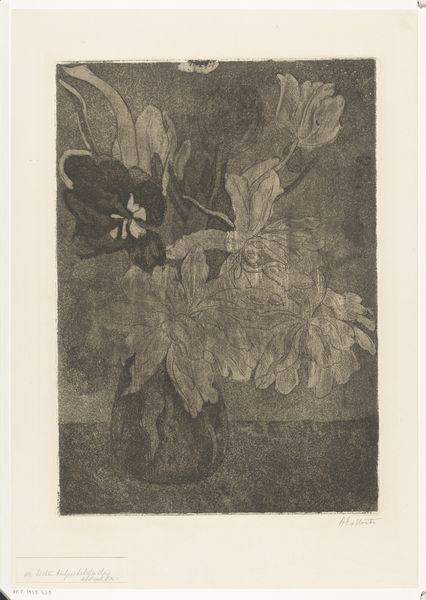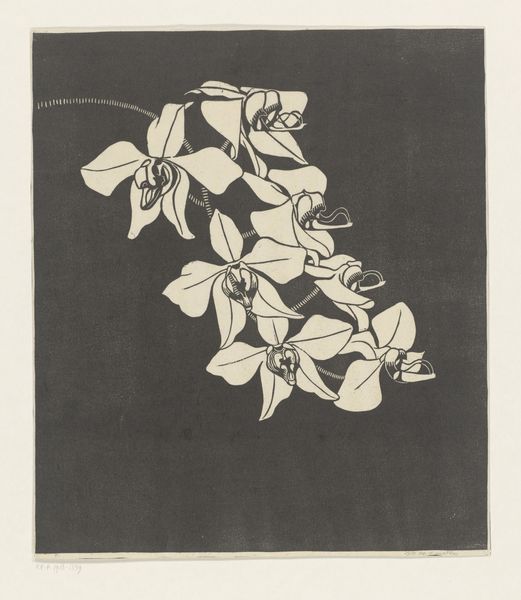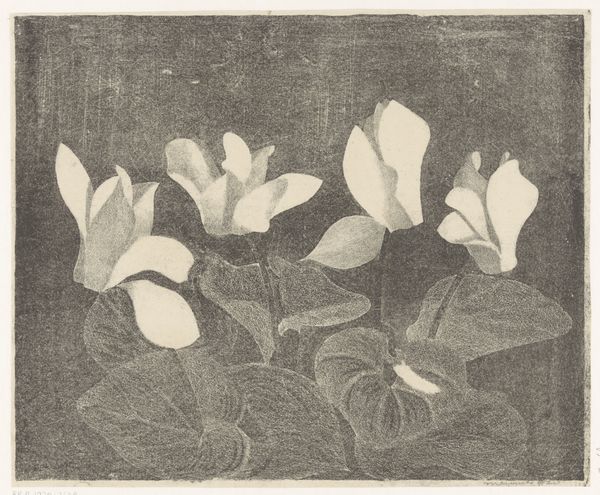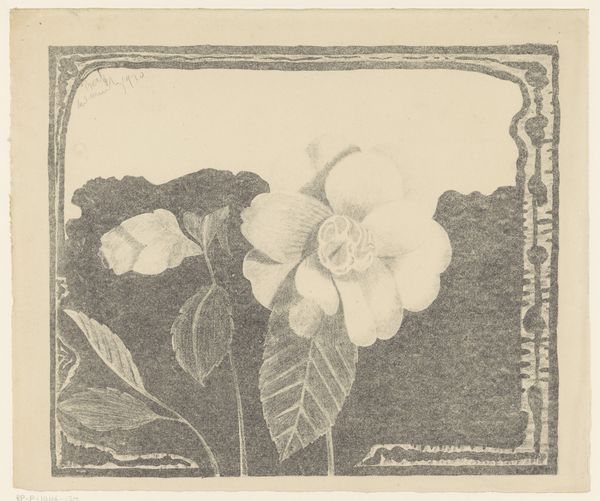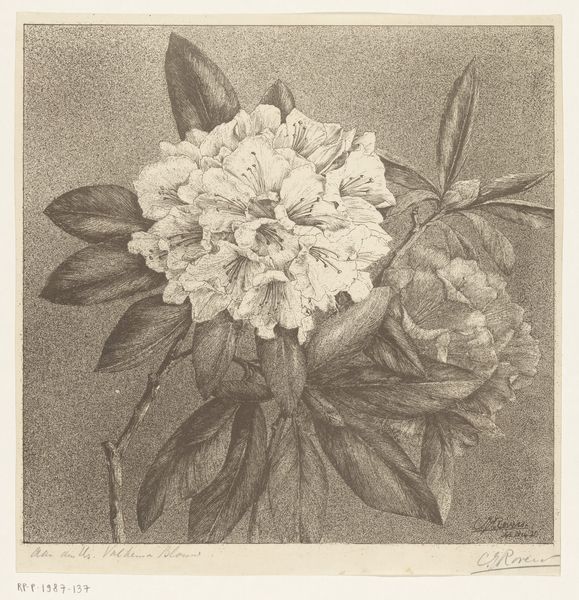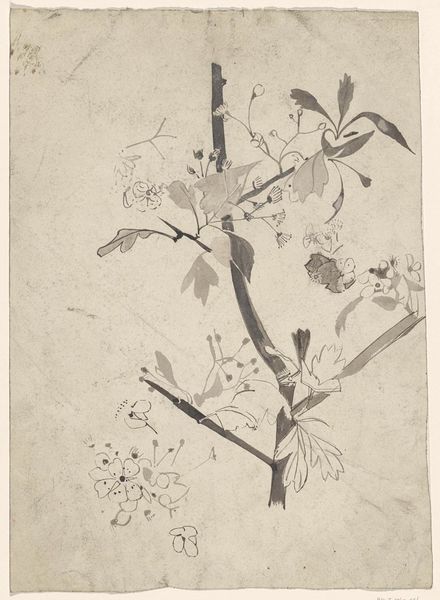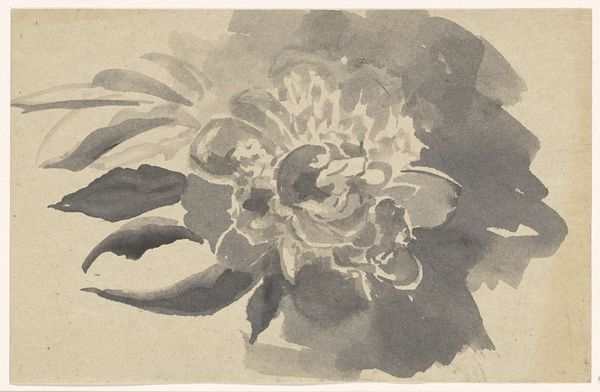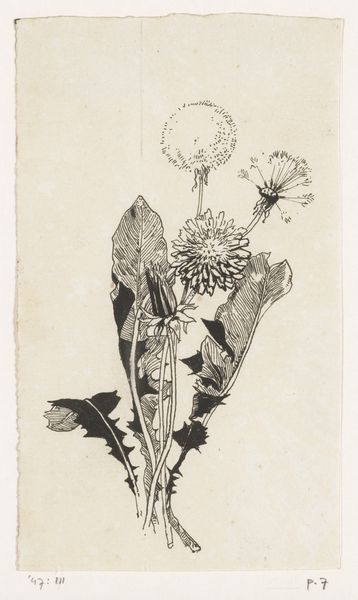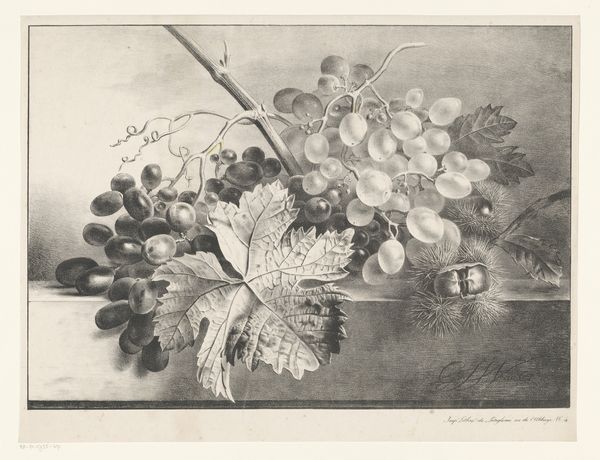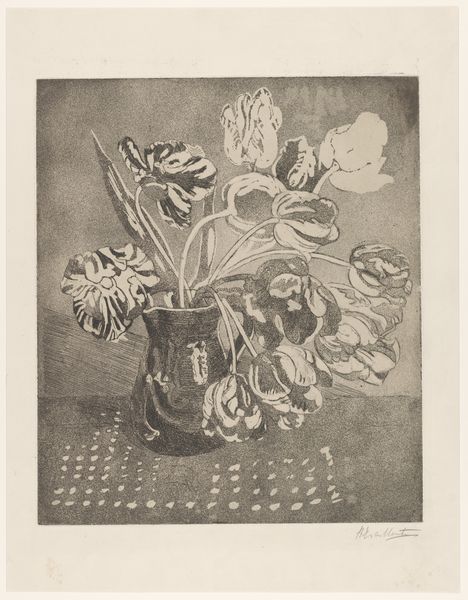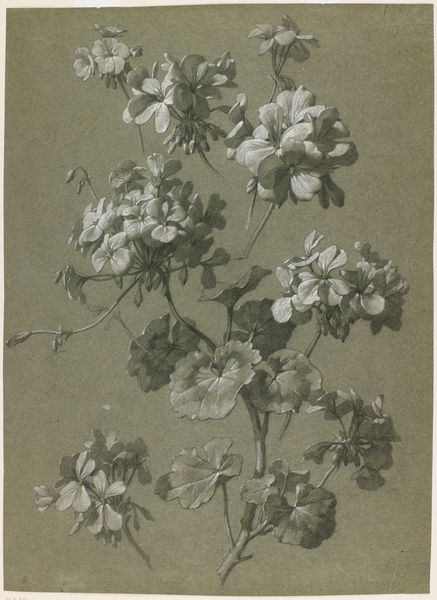
drawing, print, linocut
#
drawing
# print
#
linocut
#
linocut print
#
expressionism
Dimensions: height 215 mm, width 268 mm
Copyright: Rijks Museum: Open Domain
Curator: Welcome. Today we're looking at "Rhododendron," a linocut print created around 1920 by Samuel Jessurun de Mesquita, which now resides in the Rijksmuseum collection. Editor: My initial impression is one of stark simplicity. The bold contrast of light and dark areas and the almost brutal cuts really make the blossoms jump out against the background. There's a roughness here; it looks like the process of making this artwork was quite labor-intensive. Curator: Absolutely. Mesquita was experimenting with the linocut medium at this time. This choice speaks to a broader shift away from traditional printmaking and towards a more direct, hands-on approach to art production that resonated with the rise of Expressionism. Editor: Precisely. Thinking about the context – post World War I Europe – one can see in that bold approach a turn towards an anti-establishment attitude. Materials such as linoleum, easily available, allowed to bypass formal academic structures, making art accessible and challenging established canons of value and artistic training. Curator: I think you’re right. Also consider Mesquita’s own tragic story, a Jewish artist later murdered in Auschwitz during the Holocaust. His art becomes all the more poignant, taking on themes of cultural fragility and displacement of certain social groups in tumultuous times. Editor: Absolutely, that dark history enriches the print’s evocative power. In addition to this history of antisemitism, let’s not forget the history of linoleum itself, often used for cheap flooring and work surfaces. Placing rhododendrons—traditionally signs of wealth and luxury—within the realm of everyday, even working-class materials feels powerfully subversive. Curator: That tension you mentioned highlights how art can reflect complex social undercurrents and personal narratives. Viewing the print as more than simply an image of a flower, it provides a point for social criticism and the rise of different class dynamics after the war. Editor: Yes. For me, seeing that blend of social history through the lens of his unique craft process transforms the work from merely beautiful into powerfully communicative. Curator: Indeed. This glimpse into the artist’s experimentation and the artwork’s social backdrop gives “Rhododendron” another profound resonance for contemporary audiences. Editor: A clear confirmation on the strong intersection between art's meaning and its materiality.
Comments
No comments
Be the first to comment and join the conversation on the ultimate creative platform.
